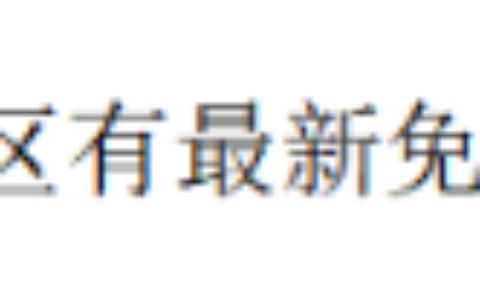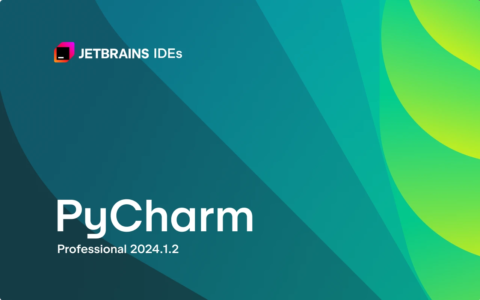全国2012年10月自学考试英语阅读(二)真题 请考生按规定用笔将所有试题的答案涂、写在答题纸上。全部题目用英文作答(翻译题除外)。 选择题部分 注意事项: 1. 答题前,考生务必将自己的考试课程名称、姓名、准考证号用黑色字迹的签字笔或钢笔填写在答题纸规定的位置上。 2. 每小题选出答案后,用2B铅笔把答题纸上对应题目的答案标号涂黑。如需改动,用橡皮擦干净后,再选涂其他答案标号。不能答在试题卷上。 I. Reading Comprehension (50 points, 2 points for each) Directions: In this part of the test, there are five passages. Following each passage, there are five questions with four choices marked A, B, C and D. Choose the best answer and then blacken the corresponding letter on your Answer Sheet. Passage One From time to time, we need an expert. In such situations, the Internet has been like a gift from the gods. In the old days, authorities were near at hand for expert advice: the village seamstress on how to make a buttonhole, the blacksmith on how to take care of a horse’s hooves, or the apothecary on what to do about warts. On the Internet, advice and answer sites are popping up all over the place, with self-proclaimed experts at the ready. Exp.com claims to have “tens of thousands of experts who can help you,”while the more restrained Abuzz.com, owned by The New York Times, limits its pitch to “Ask Anything! Real People. Real Answers.” It’s said that expert sites or knowledge networks represent the latest stage in the Internet’s evolution, a “democratization of expertise.” However, if your question is about something other than “Who invented the light bulb?”, the answers are likely to be a wild potpourri of personal opinions. Top colleges and universities are rushing into online education, but the big news is the proliferation of a new breed of for-profit online institutions bringing Internet education to the masses.“The Internet will probably be the single most democratizing force in education,” says Columbia Business School Dean Meyer Feldberg, who envisions educational programs being routed through the net to hundreds of millions of people. The largest online institution is the University of Phoenix, with some 6,000 students today and hopes of reaching 200,000 students in 10 years. The university offers bachelor’s, master’s, and doctoral degrees in business management, technology, education, and nursing. The university notes that its degree programs cost far less and may take some students far less time to complete. On the other hand, a Business Week survey of 247 companies found that only a handful would consider hiring applicants who earned their MBA degrees online.Whether that will change as for-profit online universities improve their offerings and graduates prove their worth-is anyone’s guess. The rest of the world is moving into cyberspace more slowly than the United States, and, in the developing world, the Internet has hardly penetrated at all. UN Secretary-General Kofi Annan is determined to change this through the United Nations Information Technology Service, which will train large numbers of people to tap into the income enhancing power of the Internet. Annan is also proposing an Internet health network that will provide state-of-the-art medical knowledge to 10,000 clinics and hospitals in poor countries. Questions l-5 are based on Passage One. 1. From the passage we may assume that the author______. A. trusts old days experts more than online ones B. believes that most of the online experts are qualified C. trusts the intelligence of large amounts of experts online D. believes that online experts can answer people’s questions better 2. From paragraph 2 we can infer that the author’s attitude towards experts online is_________. A. excited B. neutral C. doubtful D. indifferent 3. Which of the following best describes the author’s opinion towards the future of online education? A. People have to wait and see. B. It is predictable in future development. C. It cannot thrive without good management. D. People believe that it is doomed from the start. 4. The underlined phrase“state-of-the-art” in paragraph 6 means______. A. advanced and in large quantity B. very creative and artistic C. skillful and attractive D. very modern 5. Kofi Annan’s United Nations Information Technology Service aims at ______. A. improving UN staff’s computer skill B. promoting the use of the Internet over the world C. providing medical knowledge to poor hospitals D. promoting the use of the Internet in the United States Passage Two Nowadays there is a remarkable consensus among educators and business and policy leaders on one key conclusion: we need to bring what we teach and how we teach into the 21st century. Right now we’re aiming too low. Competency in reading and math — the focus of so much No Child Left Behind (NCLB) testing – is the meager minimum. Scientific and technical skills are, likewise: utterly necessary but insufficient. Today’s economy demands not only a high-level competence in the traditional academic disciplines but also what might be called 21st century skills. Here’s what they are: Knowing more about the world. Kids are global citizens now, even in small-town America, and they must learn to act that way. Mike Eskew, CEO of UPS, talks about needing workers who are“global trade literate, sensitive to foreign cultures, conversant in different languages” — not exactly strong points in the U.S., where fewer than half of high school students are enrolled in a foreign-language class and where the social-studies curriculum tends to fixate on U.S. history. Thinking outside the box. Jobs in the new economy — the ones that won’t get outsourced or automated – “put an enormous premium on creative and innovative skills, seeing patterns where other people see only chaos,” says Marc Tucker, an author of the skills-commission report and president of the National Center on Education and the Economy. Traditionally that’s been an American strength, but schools have become less daring in the back-to-basics climate of NCLB. Kids also must learn to think across disciplines, since that’s where most new breakthroughs are made. It’s interdisciplinary combinations — design and technology, mathematics and art – “that produce YouTube and Google,” says Thomas Friedman, the best-selling author of The World Is Flat. Becoming smarter about new sources of information. In an age of overflowing information and proliferating media, kids need to rapidly process what’s coming at them and distinguish between what’s reliable and what isn’t. “It’s important that students know how to manage it, interpret it, validate it, and how to act on it,” says Dell executive Karen Bruett, who serves on the board of the Partnership for 21st Century Skills, a group of corporate and education leaders focused on upgrading American education. Developing good people skills. EQ, or emotional intelligence, is as important as IQ for success in today’s work place.‘‘Most innovations today involve large teams of people,” says former Lockheed Martin CEO Norman Augustine. “We have to emphasize communication skills, the ability to work in teams and with people from different cultures.” Questions 6-10 are based on Passage Two. 6. The passage is mainly concerned with______. A. the No Child Left Behind program as a minimum requirement B. interdisciplinary combination for 21st century school education C. the overall competence required of a student in the 21st century D. emotional intelligence as a means to career success in the 21st century 7. If the workers are global trade literate, they should be______. A. global citizens even when they are kids B. armed with foreign cultures and languages C. living in big cities rather than in small towns D. good at doing business with peoples over the world 8. It can be inferred from the passage that American kids used to be strong at______. A. making interdisciplinary combinations B. social-studies courses and U.S. history C. producing YouTube and Google D. creative and innovative thinking 9. What should a student in an age of exploding information do with new sources of information? A. They should guard against the wrong information. B. They should be able to tell the difference between them. C. They should know how to interpret and organize them. D. They should be able to process them and identify the reliable ones. 10. According to the passage, emotional intelligence involves______. A. teamwork, cooperation skills and communication skills B. ability to deal with people from different backgrounds C. ability to make innovations as well as high intelligence D. success in today’s workplace with people from many cultures Passage Three It has been two decades since the fate of a bashful bird that most people had never seen came to symbolize the bitter divide over whether to save or saw down the ancient forests of the Pacific Northwest. Yet it was not until Thursday that the federal government offered its final plan to prevent the bird, the northern spotted owl, from going extinct. After repeated revisions, constant court fights and shifting science, the Fish and Wildlife Service presented a plan that addresses a range of threats to the owl, including some that few imagined when it was listed as a threatened species in 1990. The newer threats include climate change and the arrival of a formidable feathered competitor, the barred owl, in the soaring old-growth evergreens of Washington, Oregon and California where spotted owls nest and hunt. One experiment included in the plan: shooting hundreds of barred owls to see whether that helps spotted owls recover. Even after all these years since the spotted owl became the cause célèbre of the environmental movement, it is far from clear that the plan is a solution. Advocates on both sides say it will inevitably be challenged, and both sides have expressed frustration with the Obama administration on the issue. The spotted owl is declining by an average of 3 percent per year across its range. While some populations in Southern Oregon and Northern California are more stable, some of the steepest rates of decline are here in Washington. Some study areas in the Olympic and Cascade ranges show annual declines as high as 9 percent. The listing of the spotted owl as a threatened species led to a virtual ban on logging in many older federal forests, inspiring angry lawsuits and threats of violence by rural loggers against owl advocates, who often came from urban areas. “Nothing against the bird, but it’s wreaked a lot of havoc in the Pacific Northwest for the past 20 years,” said Ray Wilkeson, president of the Oregon Forest Industries Council, which represents loggers, sawmills and others in the industry. “A lot of human suffering has resulted from this. Now there’re new threats to the owl that may be beyond anybody’s ability to control.” Although the plan does not map critical habitat — the mapping process is more than a year away from completion, a fact that frustrates conservationists – it proposes expanding protections for owls beyond areas currently set aside. The existing areas were outlined by the Northwest Forest Plan, which was approved a year after President Clinton’s Timber Conference, revised under President George W. Bush to allow more logging and reinstated by the Obama administration. The American Forest Resource Council, a timber industry group, said the plan would impose “massive new restrictions on both federal and private lands.” But supporters say it will provide more wood for mills by increasing forest thinning and restoration work to battle threats like disease and fire that could increase with climate change. The plan would provide timber companies incentives to create potential spotted owl habitat. Officials from the Forest Service and from the Bureau of Land Management, which oversee logging on federal land, expressed support for the plan. While timber advocates question protections for a bird that some say may be bound for extinction, conservationists say that it is too soon to give up on the spotted owl, and that the fight to save it has served broader benefits of the forest, from cleaner water and air to habitat for hundreds of other species, including endangered salmon. “The spotted owl is the icon,” Dr. Forsman said, “but there are a lot of other players in terms of species and protecting biodiversity in these forests.” Questions 11-15 are based on Passage Three. 11. The purpose of the new government plan is to______. A. save Northern spotted owl B. save the Northwest forest C. list environmental threats to the Northern spotted owl D. list the Northern spotted owl as a threatened species 12. Which (from Paras. 3, 4) of the following is NOT true? A. The number of barred owls grows fast. B. The spotted owl is hunted in the forest. C. The number of spotted owls is in decline. D. The barred owl is a newcomer to the forest. 13. Who doubt about the plan? A. Only timber advocates. B. Only owl advocates. C. Advocates from both urban and rural areas. D. Both owl advocates and timber advocates. 14. Conservationists feel frustrated because______. A. the new mapping of habitat in the protection for owls is slow to complete B. the new mapping of habitat for owls will extend beyond presently set areas C. the revised Northwest Forest Plan under President Obama is maintained D. President Bush revised Northwest Forest Plan and allowed more logging 15. Dr. Forsman wanted to express in the last paragraph that_______. A. the spotted owl is a rare species B. there are a lot of other players in the forest C. the spotted owl needs protection D. some other species are equally important Passage Four If you’ve ever been pranked on April Fools’ Day, you may wonder how this tradition started. Well, you’re not alone. No one knows for sure how April Fools’ Day began. But the most likely explanation has to do with the calendar. No, that’s not an April Fools’ Day joke. People used to celebrate New Year’s Day on April lst. Just like today, people would have big parties to celebrate. Over time, the calendar changed and so did the date for New Year’s. In the 1500s, the new calendar marked New Year’s Day as January lst. But because there was no Internet or other means to spread the word, the news traveled slowly by word of mouth. It took a while for everyone to hear about the change, and even then some people resisted it. They continued to celebrate New Year’s on April lst. These people were given the nickname“April fools”. People following; the new calendar played tricks on the “April fools” by sending them on“ fool’s errands”. They had the “April fools” deliver invitations to big New Year’s celebrations that weren’t really going to happen. In France, “April fools” were called “Poisson d’Avril”, which is French for “April Fish”. This began because people thought fish were easy to catch since they could be fooled into taking the bait on a hook. Children would tag a paper fish on a person’s back to mark them as an “April Fish”. When the person discovered the fish, the prankster would yell “Poisson d’Avril”. Not everyone is convinced that this is actually how the tradition of April Fools’Day began. People have tried to pinpoint the exact date of the first April Fools’ Day, but this only led to more pranks. A professor from Boston University pranked a reporter by making up a story about a court jester who said he could run the empire better than the king. The jester was made king for a day on April lst. This turned out to be a big April Fools’ Day trick because the reporter thought the story was real. Even though we aren’t sure how this tradition began, people still celebrate April Fools’ Day by playing tricks on each other. So the next time you prank someone and yell “April Fools!” remember that the day may actually be about the people who didn’t want to change their traditions when the new calendar was adopted. Or maybe it’s just a day to celebrate the joker in all of us. Questions 16-20 are based on Passage Four 16. If you prank somebody, it means you______. A. play card with that person B. win a trick over that person C. play a trick on that person D. know a trick of that person 17. In the 1500s, who were given the nickname “April fools”? A. People who were not smart enough. B. People who didn’t know when April Fools’ Day was. C. People who celebrated New Year’s Day on January lst. D. People who refused to recognize New Year’s Day as January lst. 18. On April lst, children in France used to______. A. place paper fish on other people’s backs B. wear paper fish on their backs C. buy a new calendar D. go boat fishing 19. What does the underlined word errand mean in paragraph 3? A. A small gift sent to somebody. B. A short trip to get something done. C. A brief trip to send invitation cards. D. A short message sent to somebody. 20. What is the author’s purpose for writing this article? A. To tell readers how April Fools’ Day is celebrated. B. To remind readers that April Fools’ Day is coming up. C. To teach readers about the history of April Fools’ Day. D. To persuade readers into celebrating April Fools’ Day. Passage Five You may a ready know that hurricanes are major tropical storms that can cause devastating waves, wind, and rain. They happen during “Hurricane Season”, which is from June lst until November 30th in the Atlantic Ocean and from May 15th until November 30th in the Pacific Ocean. A storm progresses through four different stages before it is actually considered a hurricane. First is a tropical disturbance, which has thunderstorms and rotating winds, or what scientists call cyclonic circulation. Next is a tropical depression, which is similar to a tropical disturbance, but has winds between 23 and 39 miles per hour. A tropical storm is the next level, which has stronger wind speeds between 40 and 73 miles per hour. Once winds reach 74 miles per hour, the storm is officially classified as a hurricane. The winds pick up energy from the warm surface ocean water. As a hurricane crosses over land, it begins to dissipate, or break apart and reduce in strength. This is because it is no longer over the warm ocean water that it needs for energy. At this point, a hurricane can still cause a lot of damage because of high winds, rain, and flooding, but unless it makes its way back over the open ocean, it is downgraded from a hurricane back to a tropical storm. The center of a hurricane is called the eye. While most of a hurricane contains dangerously strong winds, the eye is actually a calm area in the storm. When the eye of a hurricane passes over land, people might think that it’s over, but before long the wind and rain increase again as the second part of the hurricane moves through. Can you imagine flying a plane through a hurricane? If you’re a hurricane hunter, it’s your job! Hurricane Hunters fly airplanes on weather missions to help the National Hurricane Center make predictions about hurricanes. Pilots determine how fast the winds are blowing, how big the hurricane is, and which direction it’s moving. This helps people to be better prepared for hurricanes as they approach shore. Hurricanes can leave behind lots of destruction. In 2005, Hurricane Katrina ripped through Louisiana, Alabama, Mississippi and Texas. This was the sixth windiest hurricane on record, and it was one of the deadliest hurricanes in history. It took l,833 lives and caused over 76 billion dollars in damages. Many people are surprised to learn that Katrina’s wind didn’t cause most of the damage. The wind had caused levees in New Orleans to break. When the levees broke, water from the Gulf of Mexico rushed into the low-lying land. Over 80% of the city of New Orleans was buried in flood water. Questions 21-25 are based on Passage Five. 21. Which sequence of storm stages is in the correct order? A. Tropical depression, tropical disturbance, tropical storm, hurricane. B. Hurricane, tropical storm tropical depression, tropical disturbance. C. Hurricane, tropical depression, tropical storm, tropical disturbance. D. Tropical disturbance, tropical depression, tropical storm, hurricane. 22. What would you observe if you were in the eye of a hurricane? A. Very heavy rain. B. Very little wind. C. Strong and spinning winds. D. Strong winds and heavy rain. . 23. What happens when a hurricane crosses over land? A. It breaks apart and forms tornadoes. B. It gathers more vapor from land. C. It moves more quickly. D. It loses strength. 24. What does a hurricane hunter do? A. Fly airplanes through hurricanes. B. Help people find a safe place to stay. C. Issue warnings to notify people of danger. D. Use computers to predict the paths of hurricanes. 25. What caused the most destruction during Hurricane Katrina in 2005? A. Houses being blown away. B. Floods due to breaking levees. C. Heavy rain due to Hurricane Katrina. D. People going outdoors during the storm. 非选择题部分 注意事项: 用黑色字迹的签字笔或钢笔将答案写在答题纸上,不能答在试题卷上。 II. Vocabulary (10 points, 1 point for each) Directions: Scan the following passage and find the words which have roughly the same meanings as those given below. The number in the brackets after each word definition refersto the number of paragraph in which the target word is. Write the word you choose on theAnswer Sheet. Britain’s most prestigious scientific institution, the Royal Society, will host a meeting for some of the world’s top psychologists. Their aim is to find out why it is that some people’s lives go so right. What is it that makes them happy and fulfilled, while others seem doomed to founder in misery, dissatisfaction and dejection? Psychologists have known for some time that optimism is a good defense against unhappiness.“If you are optimistic and you think life is going to get better, it will become a self-fulfilling prophecy,” says Baylis. “You will involve yourself more, you will take more care of yourself. You will figure that if you do more exercise and not booze as much, life will be better.” Positive psychologists believe optimism can be learned, and we can teach ourselves to see a half-empty glass as half-full.“Research on depression shows that one of the biggest causes of depression is ruminating about something that went wrong in the past,” says Baylis.“What happens is you look into the past and think about some event and keep turning it over, saying, ‘I messed up, I messed up,’ and you let it hurt you.” But just as dwelling on negative events can lead to depression, dwelling on things that have gone well can help pick you up.“You have to thank your lucky stars about what goes right on a daily basis. Whenever you get the feeling of being negative about things, just take a moment out and remind yourself of the stuff that has gone well. It could be anything from a conversation to your garden looking nice, or that it didn’t rain on you when you were out on your bike. It’s an extremely powerful technique.” By reminding ourselves what went well instead of what went wrong, positive psychologists believe we can build a buffer against unhappiness, making us better able to take life’s knocks when they come. 26. having high status (Para. 1) 27. satisfied because of fully developing one’s abilities (Para. 1) 28. a sad and depressed state (Para. 1) 29. a prediction of what will happen in the future (Para. 2) 30. to drink alcohol, especially in large quantities (Para. 2) 31. a mental state of gloomy feelings (Para. 3) 32. to think deeply about something (Para. 3) 33. not optimistic (Para. 4) 34. a cushion-like device that reduces shock (Para.5) 35.a discouraging experience (Para. 5) III. Summarization (20 points, 2 points for each) Directions: In this part of the test, there are ten paragraphs. Each of the paragraphs isfollowed by an incomplete phrase or sentence which summarizes the main idea of the paragraph. Spell out themissing letters of the word on your Answer Sheet. Passage One Women in 1970 earned on average 52 cents for every dollar a man earned. By 2007, women earned 71 cents, a great improvement. But that’s not likely to grow much as long as a greater percentage of women work in lower-paying fields and more women than men leave the workplace for periods to raise children. 36. Women generally earn 1______ than men. Passage Two Why is our appetite so powerful a driver of our behavior? If that question has long defied easy answers, it’s no wonder. Understanding a single biological unit — the heart, the lungs — is hard enough. Understanding a process as complex as appetite — one that involves taste, smell, sight, brain chemistry, gut chemistry, metabolism and, most confounding of all, psychology — is exponentially harder. 37. Appetite mechanism is d______ to understand. Passage Three Emotions and values play an enormous role in how we process information and make choices. We are beset by cognitive biases that throw what would be sound decision-making off-balance. Take loss aversion: psychologists have found that human beings tend to be more concerned about avoiding losses than achieving gains, holding onto what they have even when this is not in their best interests. 38. Emotions and values greatly a______ decision-making. Passage Four Most mammals can sprint faster than humans— having four legs gives them the advantage. But when it comes to long distances, humans can outrun almost any animal. Because we cool by sweating rather than panting, we can stay cool at speeds and distances that would overheat other animals. 39. Human’s efficient c______ system. Passage Five Rising carbon dioxide levels leads to global warming. The industrialized world has been the main protagonist given that carbon dioxide lasts about 100 years in the atmosphere, but as the developing nations become increasingly mechanized and urbanized, the balance is shifting. Indeed, the carbon emissions of Asia more than doubled from 1990 onwards. 40. Developing countries p______ more carbon emissions than before. Passage Six An average of just one 85-gram serving of unprocessed red meat — such as a medium hamburger or a small pork chop — per day increased by 12 percent the chances a person would get type 2 diabetes over the course of a decade or two. 41. C______ of red meat increases risk of diabetes. Passage Seven When it comes to money, it often pays to ignore financial news. The media is in the business of selling news, and to do that, they sensationalize it. Fueled by the over-eager reporting, irrational exuberance can quickly turn to pervasive gloom. Neither state of mind makes sense. They’re both extremes that lead investors to make poor decisions. 42. Financial news may m______ investors. Passage Eight Orbiting only about three million miles out from its star, the Jupiter-size gas giant planet, dubbed TrES-2b, is heated to 980 degrees Celsius. Yet the apparently inky world appears to reflect almost none of the starlight that shines on it. 43. A d______ planet that reflects almost no light. Passage Nine Thirty-six years ago, when the grizzly was first listed as threatened, there were no bears along the Rocky Mountain Front, the plains at the base of the Rockies. If one was spied, it was routinely killed by ranchers. Now there are over a hundred, perhaps many more. 44. A______ of bears in their former habitat. Passage Ten Scientists have been finding evidence of life inside meteorites for well over 100 years — that, or the building blocks of life. The claims of life have proved false every time. It always turns out to be a wishful interpretation of chemicals, minerals and tiny structures inside the meteorite that could be the fossilized long-dead bacteria — but almost certainly aren’t. 45. Scientists f______ to find valid evidence of life inside meteorites. IV. Translation. (20 points, 4 points for each) Directions: In the following passage, there are five groups of underlined sentences. Read thepassage carefully and translate these sentences into Chinese. Write the Chinese version onyourAnswer Sheet. The over-sixty population is growing faster than any other age group. Between 1950 and 2050 it is expected to increase from 200 million to 2 billion. As the number of older persons increases, so will the need to ensure their social inclusion, based on an income from decent work or retirement and a chance to participate in community life through employment, volunteer work or other activities. (46) According to the International Labor Organization, “decent work” is work that meets people’s basic aspirations, not only for income, but also for security for themselves and their families, in a working environment that is safe. Decent work treats men and women equally, without discrimination or harassment. Finally, decent work provides social security and is carned out in conditions of freedom and human dignity. But there are over l.2 billion people in the world who live on an income of less than $1 a day, and another billion who live on less than $2 a day. (47) They live hand to mouth, day to day, and do not have enough income to support their daily existence — much less put something aside for retirement. In most developing countries retirement is a luxury few older people can afford. Even in developed countries some hard working people will not have enough to live on retirement. Many women — paid less than men, working more at home than men, and working more informally than men — may not be ready or able to rest at 65. By tradition, at least in developed countries, there is a change to roles as one moves from active middle years into “gentle” and “enjoyable” retirement. This change in roles has been viewed by the public, by government and by business, as a transition from a productive time of life to one that is unproductive and dependent. But today more than ever, this is not true. (48) Most older people do not withdraw from society. Instead, they continue to contribute to their households, to their descendants and to their communities, although their contribution may not be paid employment. Instead of producing goods or services — the traditional economic model “products” – older persons may contribute a “product” that has value to society, such as caring for children, caring for other older persons, caring for the oldest old, providing community leadership, mentoring or being an effective role model. (49) But in spite of their significant human and economic benefits, such contributions have not been figured into an economy’s gross national product. And they have not been appropriately valued. Over the past several decades, most industrialized countries have experienced a substantial drop in the average age at which individuals retire from the labor market. (50) Longer life expectancy and better health have not been accompanied by longer working lives. As a consequence, these countries are facing serious concerns about the viability of social security systems. A key challenge for these countries is to mitigate the effects of a drop in the working age population by increasing and prolonging the participation of older people in the labor market.
2024最新激活全家桶教程,稳定运行到2099年,请移步至置顶文章:https://sigusoft.com/99576.html
版权声明:本文内容由互联网用户自发贡献,该文观点仅代表作者本人。本站仅提供信息存储空间服务,不拥有所有权,不承担相关法律责任。如发现本站有涉嫌侵权/违法违规的内容, 请联系我们举报,一经查实,本站将立刻删除。 文章由激活谷谷主-小谷整理,转载请注明出处:https://sigusoft.com/55844.html










